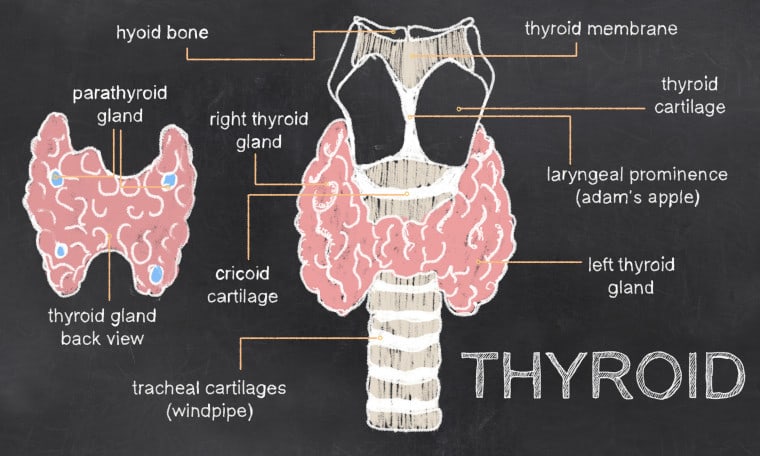For Something So Small, it Can Cause a Lot of Trouble
Sometimes you just know that something is wrong and you don’t know what it is. Sometimes getting a diagnosis can be hard. Well, three years ago a patient taught me a lot about hyperparathyroidism, and now, it seems I see more of it all the time.
It’s true, you get more of what you notice!
Hyperparathyroidism is a disease that affects one or more of your four parathyroid glands. These glands are located behind the thyroid gland and they produce parathyroid hormone (PTH). PTH is needed to regulate calcium, an important mineral in the body. Too much or too little calcium and your body will not function optimally. Parathyroid gland tumors (<<1 % are cancerous) overproduce PTH and cause elevated calcium levels in the blood.
The symptoms of hyperparathyroidism vary greatly in severity, and are not related to the level of calcium in the blood. Meaning, if someone has high calcium, this does not mean that they will have more signs and symptoms than someone with lower calcium.
Common signs and symptoms of hyperparathyroidism include:
- Fatigue. Tired all the time. This is the most common complaint
- Less interest in life and the things you once loved
- Poor Focus/Memory
- Trouble Sleeping
- You are tired during the day and want a nap, but find that naps don’t help
- Depression or Depressed Mood
- Loss of Bone (osteoporosis or osteopenia)
- Bone Pain, it is usually in the arms and legs, but can be anywhere
- Heartburn, Gastroesophageal Reflux Disease (GERD)
- High Blood Pressure, which often fluctuates
- Low Sex Drive
- Headaches
- Thinning Hair
- Heart Disease
- Atrial Fibrillation or other unusual heart palpitations (arrhythmias)
- Abnormal Liver Function Tests
- Kidney Disease, including kidney stones
Diagnosing hyperparathyroidism can be tricky, which is why people can have problems for many years before being diagnosed.
To get a diagnosis we will check some or all of these:
- Blood calcium levels will be elevated. Elevated calcium is considered above 10, by the leading experts of the Parathyroid Gland, the Norman Parathyroid Clinic in Tampa, FL
- PTH level. This can be normal or elevated.
- Liver function tests
- Bone density tests
- Radiological study (although not necessarily recommended) of the parathyroid called a Sestamibi Scan
Dr. Norman’s clinic says that “the frustrating thing about parathyroid scans, is that they are frequently normal, even when there is a tumor.”
On their website, the Norman Parathyroid Clinic shows many parathyroid tumors that were not detected on a Sestamibi Parathyroid Scan.
Once the hyperparathyroidism diagnosis is confirmed, the best option is to surgically remove the affected gland(s). There is no room for medications or a ‘watch and see’ approach. In the old days, parathyroidectomy (removal of parathyroid) was a highly invasive and prolonged surgical procedure that took up to 5 hours to complete.
Today parathyroidectomy can be performed in less than 20 minutes and a patient can leave within 2 hours.
The outcome of parathyroidectomy is excellent in almost all cases. People with bone pain may feel better immediately. Other symptoms gradually disappear within weeks and a few such as cardiovascular, bone loss and nervous system will take a few months. Bone density building starts immediately after the tumor removal.
Look at your calcium level from your most recent bloodwork. If it is above 10, I recommend a further evaluation.
For more detailed information, check out Dr. Norman’s Clinic at http://www.parathyroid.com
- If You Don’t Know About the P-Shot, You May Be Missing Out! - October 31, 2016
- Is the O-Shot® for You? - September 20, 2016
- For Something So Small, it Can Cause a Lot of Trouble - April 1, 2016
- Seeding for C-section Babies? - February 27, 2016
- Don’t Miss Out on Feeling Your Best with Testosterone Replacement - February 20, 2016
- Relieve Your Bladder Pain Now! - February 12, 2016
- Is Cholesterol Really Killing Us? - February 5, 2016
- New Discovery! - January 29, 2016


